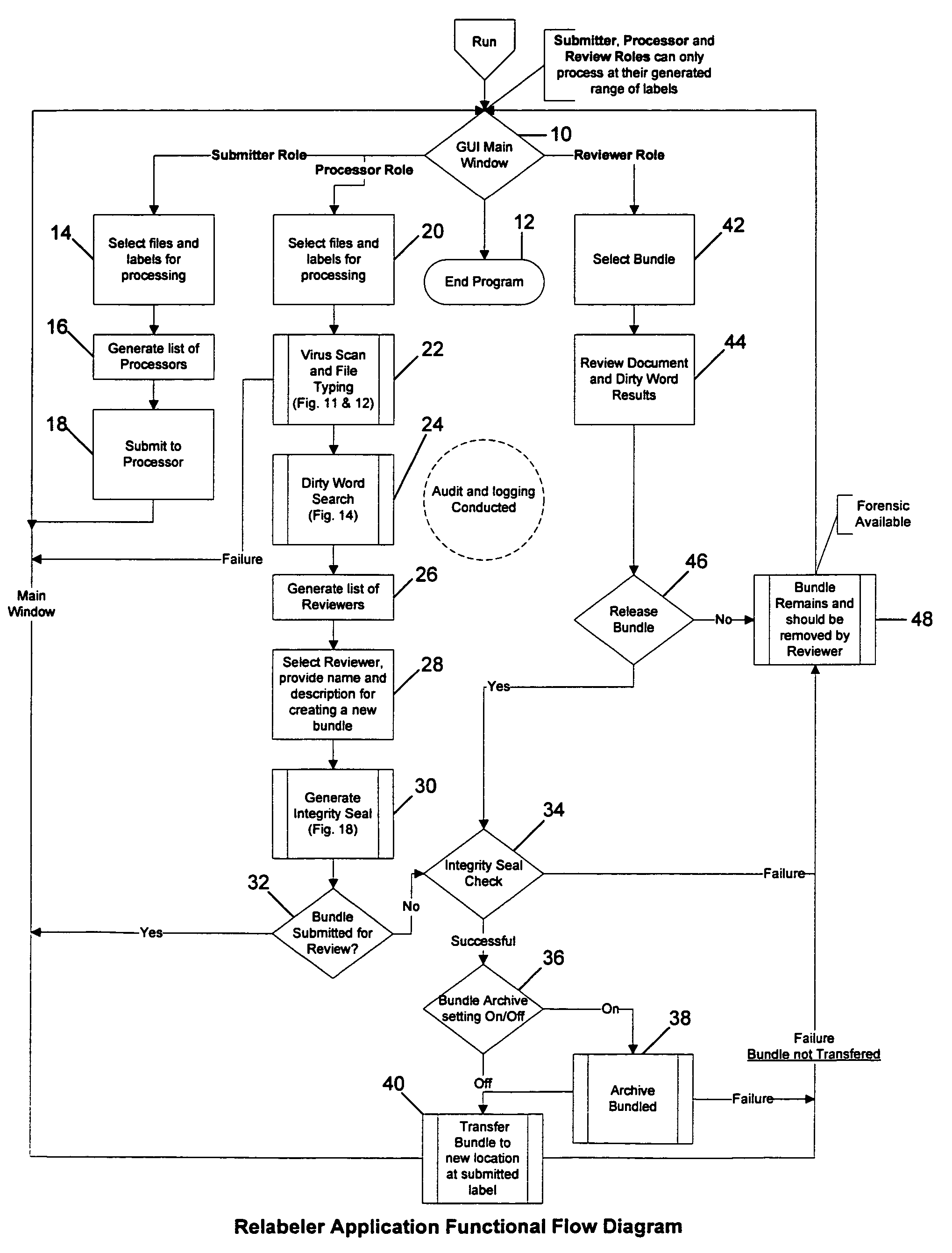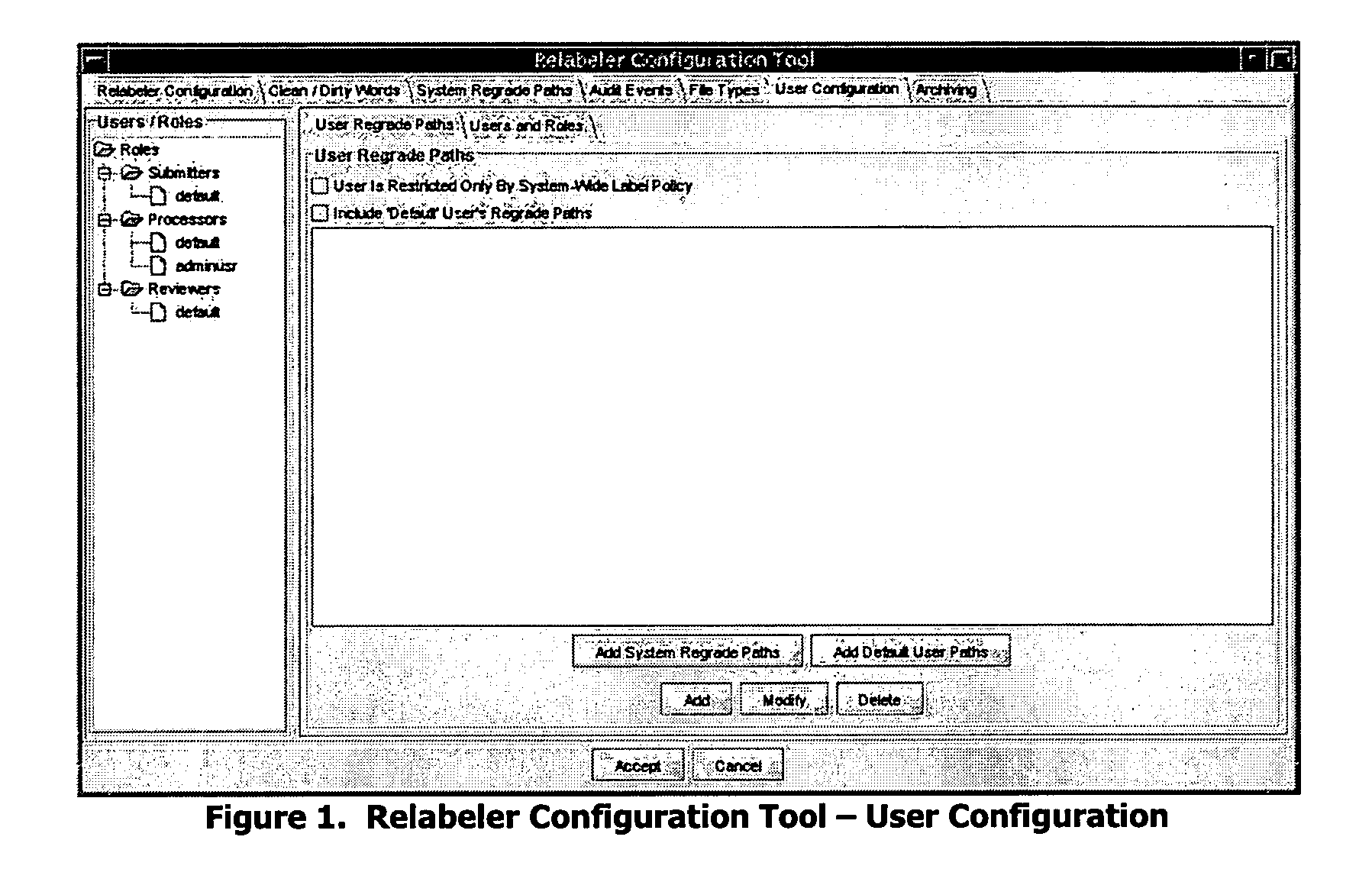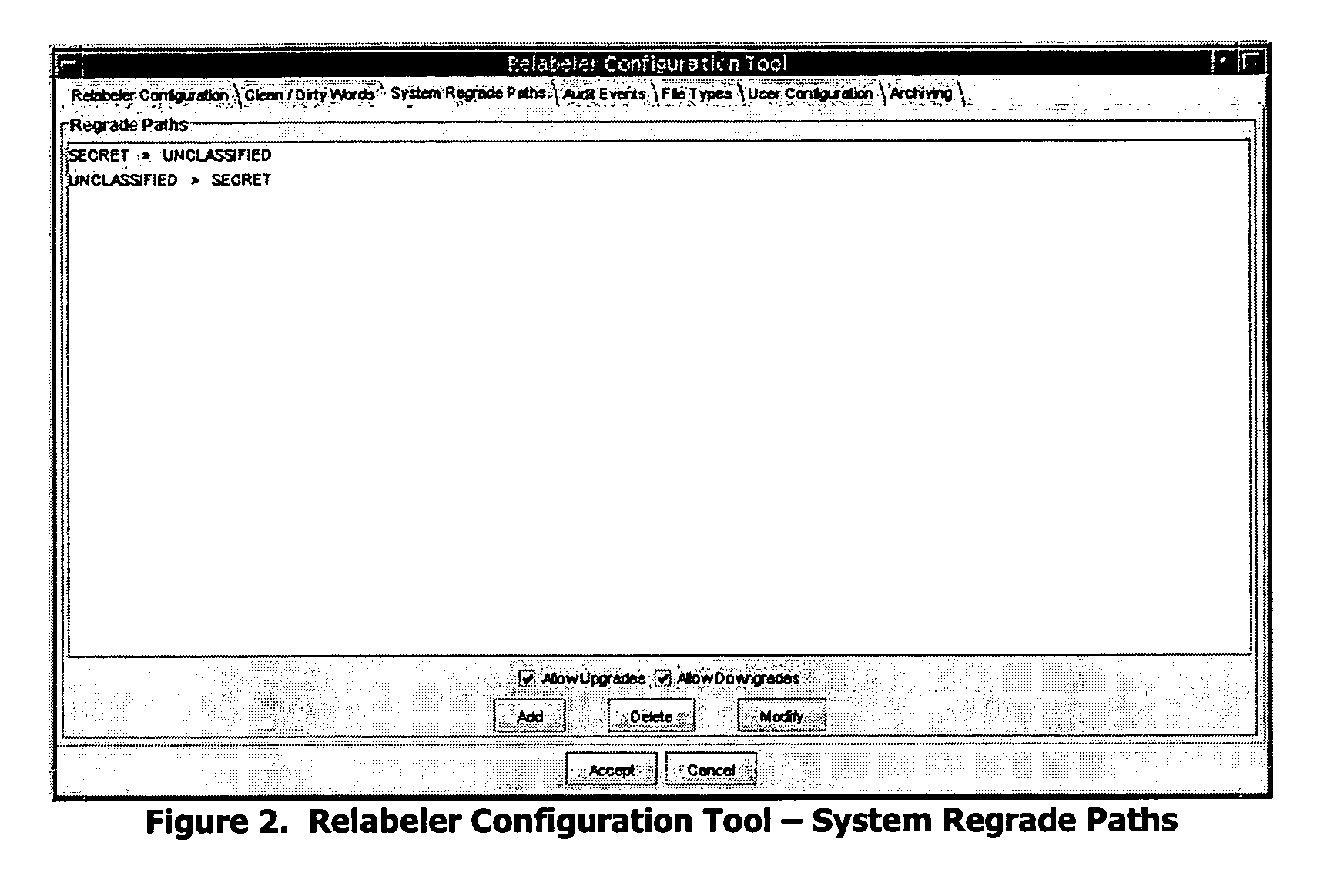Trusted file relabeler
a file relabeling and file technology, applied in the field of computer systems and software, can solve the problems of difficult enforcement or providing a record that a two-person review has occurred, and the manual review method of dia's method is normally a time-consuming manual process, so as to reduce the amount of time needed for transmitting documents
- Summary
- Abstract
- Description
- Claims
- Application Information
AI Technical Summary
Benefits of technology
Problems solved by technology
Method used
Image
Examples
Embodiment Construction
[0030]A detailed description of illustrative embodiments of the present invention will now be described with reference to FIGS. 1-18. Although this description provides detailed examples of possible implementations of the present invention, it should be noted that these details are intended to be exemplary and in no way delimit the scope of the invention. All limitations of the invention are set forth in the appended claims.
Overview of the Invention
[0031]The invention provides a trusted relabeler system and software that allows for the simultaneous reclassification of multiple files to multiple classification labels (security domains or computer networks) through automation of the multi-person review process. Roles, used to break down the requirements of the multi-person review process, dictate what specific function a user can perform. There are three roles used by the invention: Submitter, Processor, and Reviewer. The Submitter is allowed to submit one or more documents for reclas...
PUM
 Login to View More
Login to View More Abstract
Description
Claims
Application Information
 Login to View More
Login to View More - R&D
- Intellectual Property
- Life Sciences
- Materials
- Tech Scout
- Unparalleled Data Quality
- Higher Quality Content
- 60% Fewer Hallucinations
Browse by: Latest US Patents, China's latest patents, Technical Efficacy Thesaurus, Application Domain, Technology Topic, Popular Technical Reports.
© 2025 PatSnap. All rights reserved.Legal|Privacy policy|Modern Slavery Act Transparency Statement|Sitemap|About US| Contact US: help@patsnap.com



